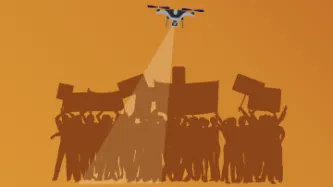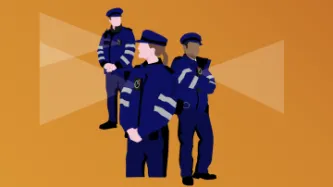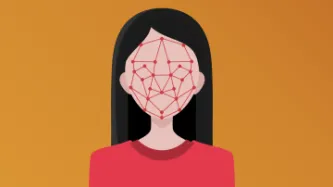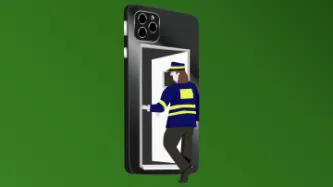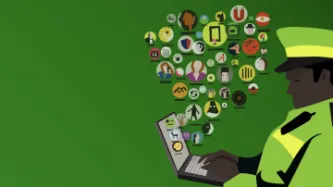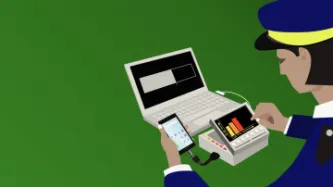Advanced Search
Content Type: Explainer
What are police drones?
Drones are remotely controlled Unmanned Aerial Vehicles (UAVs) of varying sizes.
They usually come equipped with cameras and might be enabled with Facial Recognition Technology.
Drones can be equipped with speakers, surveillance equipment, radar and communications interception tools, such as ‘IMSI catchers’.
How might drones be used during protests?
Camera-enabled drones may be used to remotely monitor and track people’s movements in public spaces, including at…
Content Type: Explainer
What do Body Worn Video cameras do?
Body worn video (BWV) cameras can be attached to a police officer’s clothing – often at chest, shoulder or head level – and record video, including sound, from the officer’s perspective.
BWV cameras will probably be visible to you, and when it’s recording, a flashing light should appear on the device.
How might body worn video cameras be used at a protest?
BWV cameras may be used at protests to monitor actions of protestors.
They do not usually…
Content Type: Explainer
What is gait recognition technology?
Gait recognition technology (GRT) can analyse the shape of an individual’s body and the unique way in which that body moves when walking or running, which can then be used to identify them.
GRT works in a similar way to facial recognition technology. But the two main differences are:
GRT may be used at a fairly long range (at the time of writing, about 165 feet / 50 metres), unlike FRT which generally requires more close up, detailed facial images…
Content Type: Explainer
What is Facial Recognition Technology?Facial recognition technology (FRT) collects and processes data about people’s faces, and can be used to identify people. FRT matches captured images with images stored in existing databases or ‘watchlists’.How might it be used in relation to a protest?FRT may be used to monitor, track and identify people’s faces in public spaces, including at protests. This may be done openly or surreptitiously, without people knowing or consenting.FRT-enabled cameras can…
Content Type: Explainer
What is hacking?
Hacking refers to finding vulnerabilities in electronic systems, either to report and repair them, or to exploit them.
Hacking can help to identify and fix security flaws in devices, networks and services that millions of people may use. But it can also be used to access our devices, collect information about us, and manipulate us and our devices in other ways.
Hacking comprises a range of ever-evolving techniques. It can be done remotely, but it can also include physical…
Content Type: Explainer
What is an IMSI catcher?
‘IMSI’ stands for ‘international mobile subscriber identity’, a number unique to your SIM card. IMSI catchers are also known as ‘Stingrays’.
An ‘IMSI catcher’ is a device that locates and then tracks all mobile phones that are connected to a phone network in its vicinity, by ‘catching’ the unique IMSI number.
It does this by pretending to be a mobile phone tower, tricking mobile phones nearby to connect to it, enabling it to then intercept the data from that phone…
Content Type: Explainer
What are ‘cloud extraction tools’ and what do they do?
Cloud extraction technology enables the police to access data stored in your ‘Cloud’ via your mobile phone or other devices.
The use of cloud extraction tools means the police can access data that you store online. Examples of apps that store data in the Cloud include Slack, Instagram, Telegram, Twitter, Facebook and Uber.
How might cloud extraction tools be used at a protest?
In order to extract your cloud data, the police would…
Content Type: Explainer
What do mobile phone extraction tools do?
Mobile phone extraction (MPE) tools are devices that allow the police to extract data from mobile phones, including:
contacts;
call data (i.e. who you call, when, and for how long);
text messages (including who you texted and when);
stored files (photos, videos, audio files, documents etc);
app data (including the data stored on these apps);
location information history;
wifi network connections (which can reveal the locations of any…
Content Type: Examples
Nepal will deport five foreign tourists and ban them from re-entering the country for two years after they joined protests demanding better quarantine facilities, more testing, and transparency in procuring medical supplies. Four tourists - three from China and one from the US - were arrested and fined NPR10,000 ($82.75). An Australian tourist was also arrested, and fined twice much because he also took pictures of the protests. A Norwegian woman married to a Nepali was fined NPR5,000, but was…
